Giant Electric Ray, Narcine entemedor
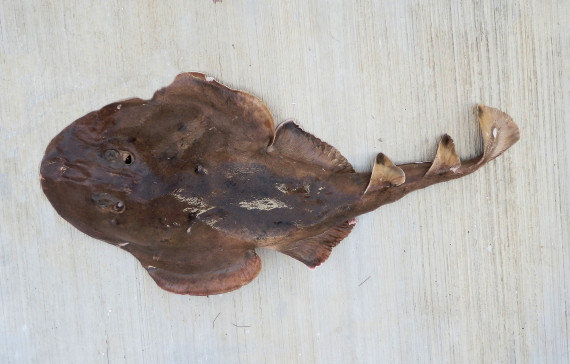

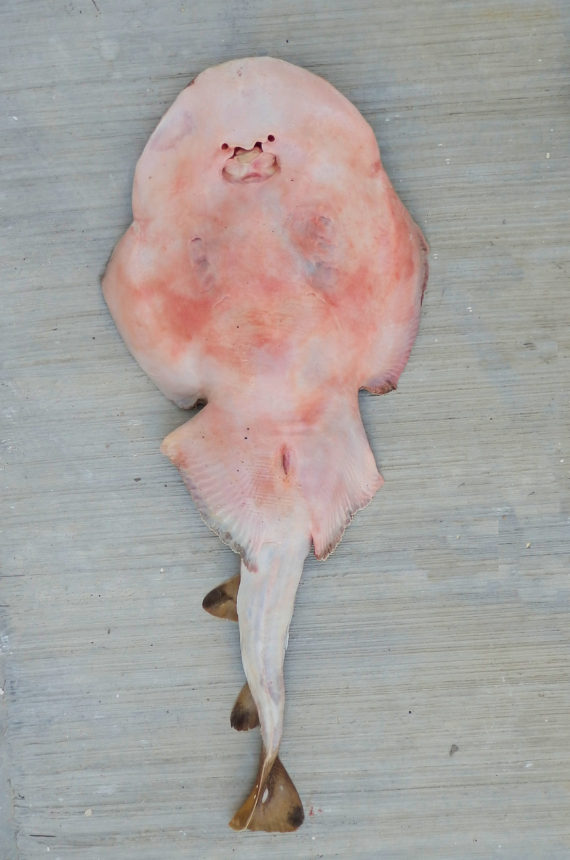
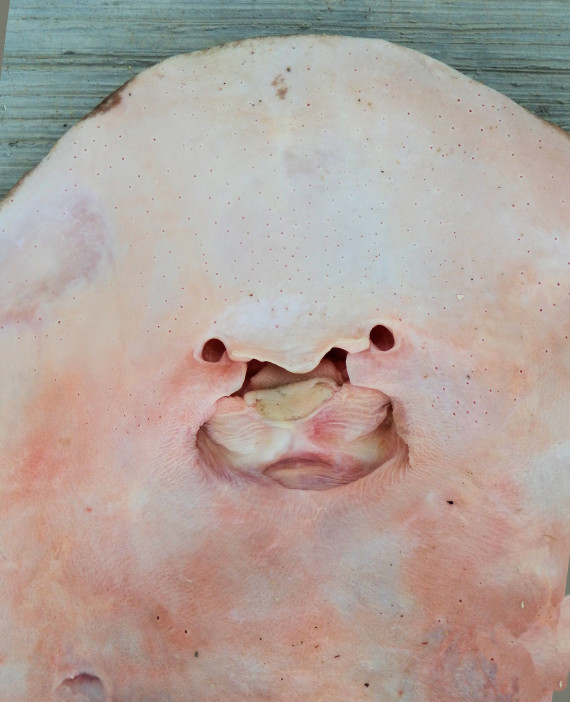 Giant Electric Ray, Narcine entemedor. Fish provided by the commercial fishermen of the greater Los Cabos area, Baja California Sur, July 2007. Length: 56 cm (22 inches).
Giant Electric Ray, Narcine entemedor. Fish provided by the commercial fishermen of the greater Los Cabos area, Baja California Sur, July 2007. Length: 56 cm (22 inches).
 Giant Electric Ray, Narcine entemedor. Fish caught in coastal waters off Puerto Adolfo Lopez Mateos, Baja California Sur, September 2020. Catch and photography courtesy of Jimmy Camacho, Puerto Adolfo Lopez Mateos. Length: 78 cm (2 feet 7 inches).
Giant Electric Ray, Narcine entemedor. Fish caught in coastal waters off Puerto Adolfo Lopez Mateos, Baja California Sur, September 2020. Catch and photography courtesy of Jimmy Camacho, Puerto Adolfo Lopez Mateos. Length: 78 cm (2 feet 7 inches).
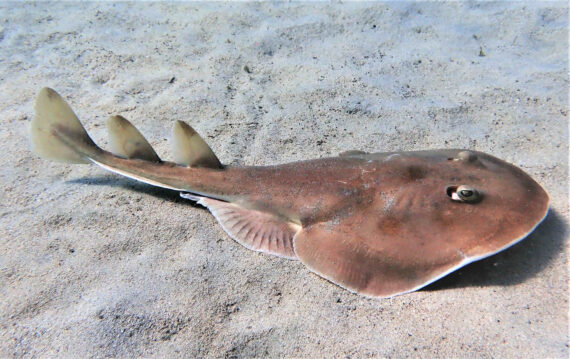 Giant Electric Ray, Narcine entemedor. Underwater photograph taken in Zihuantanejo Bay, Guerrero, January 2023. Photograph courtesy of Ron Woheau, Zihuantanejo.
Giant Electric Ray, Narcine entemedor. Underwater photograph taken in Zihuantanejo Bay, Guerrero, January 2023. Photograph courtesy of Ron Woheau, Zihuantanejo.
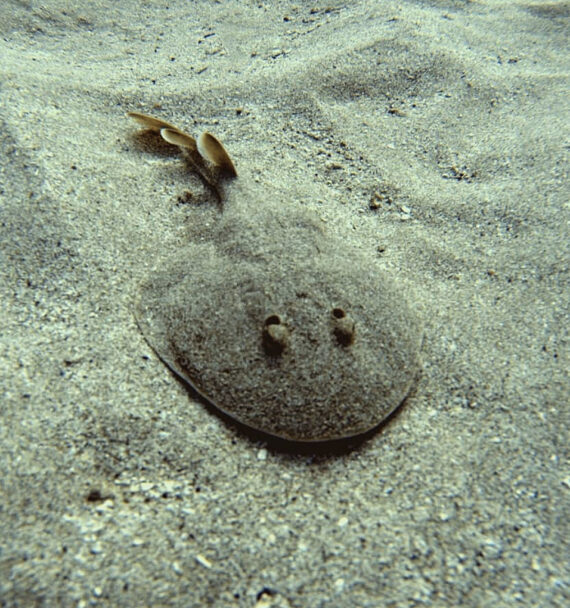 Giant Electric Ray, Narcine entemedor. Underwater photograph taken in Zihuantanejo Bay, Guerrero, December 2019. Photograph and identification courtesy of Maude Jette, Dive Zihuantanejo, www.Divezihuatanejo.com.
Giant Electric Ray, Narcine entemedor. Underwater photograph taken in Zihuantanejo Bay, Guerrero, December 2019. Photograph and identification courtesy of Maude Jette, Dive Zihuantanejo, www.Divezihuatanejo.com.
The Giant Electric Ray, Narcine entemedor, is a member of the Electric Ray or Narcinidae Family, that is also known as the Cortez Numbfish and in Mexico as raya eléctrica gigante. Globally, there are fifteen species in the genus Narcine, of which three are found in Mexican waters, one in the Atlantic and two in the Pacific Ocean.
The Giant Electric Ray has a body that is comprised of an elongated oval very flat discs that are slightly longer than they are wide. They are a uniform olive-brown dorsally and off-white ventrally. Juveniles have 4 or 5 dark-centered symmetrically arranged ocelli or blotches. The rear margins of their fins are white. Their head has relatively small eyes, nostrils with one opening, and a small protractile and tubular mouth with large teeth visible when closed. They have prominent well developed electric organs originating just before the eyes that are capable of delivering strong jolts to stun prey. They also have an accessory electric organ that produces low voltage discharges and may function in communications. Their skin is loose and soft and lacks denticles or thorns. They have 2 rounded dorsal fins, the second being slightly larger than the first. Their enlarged pectoral fins slightly overlap the front of the pelvic fins. Their caudal fin is angular and relatively tall with a straight rear margin. Their tail is shorter than the disc.
The Giant Electric Ray is a demersal species found intertidally over sandy and rubble terrain at depths up to 100 m (330 feet). They are a dimorphic species with females being larger than males and reach a maximum length of 1.07 m (3 feet 6 inches) compared to the maximum length of 67 cm (26 inches) for males. They are more active at night moving into shallow water environments to seek food by stirring bottom sediment with their pectoral fins and dislodging small crustaceans, mollusks, polychaetes, and teleosts on which they feed. Reproduction is via internal fertilization. Embryos develop by aplacental viviparity with a gestation period of 10 to 12 months and pups are born live. The fecundity rates are high with litter sizes ranging from 4 to 20 but sexual maturity is not reached by females for 6 years. Larger females produce the largest litters. Pups are born as miniature adults and are independent from birth. The discs of newborns vary from 14.0 cm (5.5 inches) to 16.0 cm (6.3 inches) in width. Females and males have lifespans of fifteen and eleven years, respectively. The Giant Electric Ray is poorly studied with very limited information available about their lifestyle and behavioral patterns including specific details on age, growth, longevity, movement patterns, diet, habitat use, and reproduction.
The Giant Electric Ray is a resident of all Mexican waters of the Pacific with the exception that they are absent from Guerrero Negro, Baja California, northward along the central and northwest coasts of Baja.
The Giant Electric Ray cannot be confused with any other species due to its large stature and uniform brown color.
From a conservation perspective the Giant Electric Ray has not been formally evaluated and is currently considered to be Data Deficient, however, populations in Mexico are known to be decreasing. They are fished commercially and considered a quality food fish. They are heavily overfished targeted species during the spring and early summer when females make runs to known locations for mating, spawning, and pupping. They are also caught as a by-catch of shrimp trawlers. Conservation efforts are severely hampered by poor landing rate data and the fact that this species remains essentially unregulated.